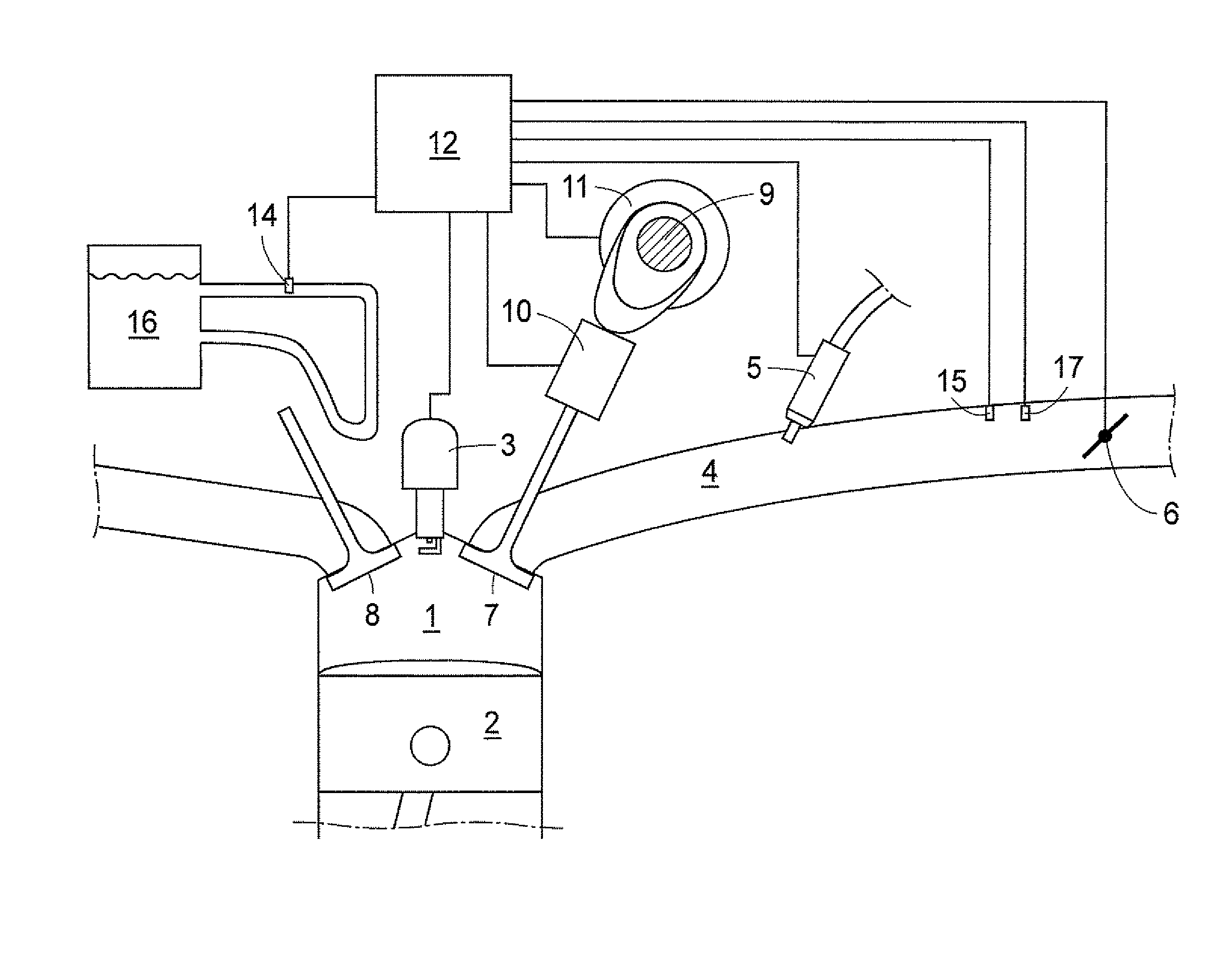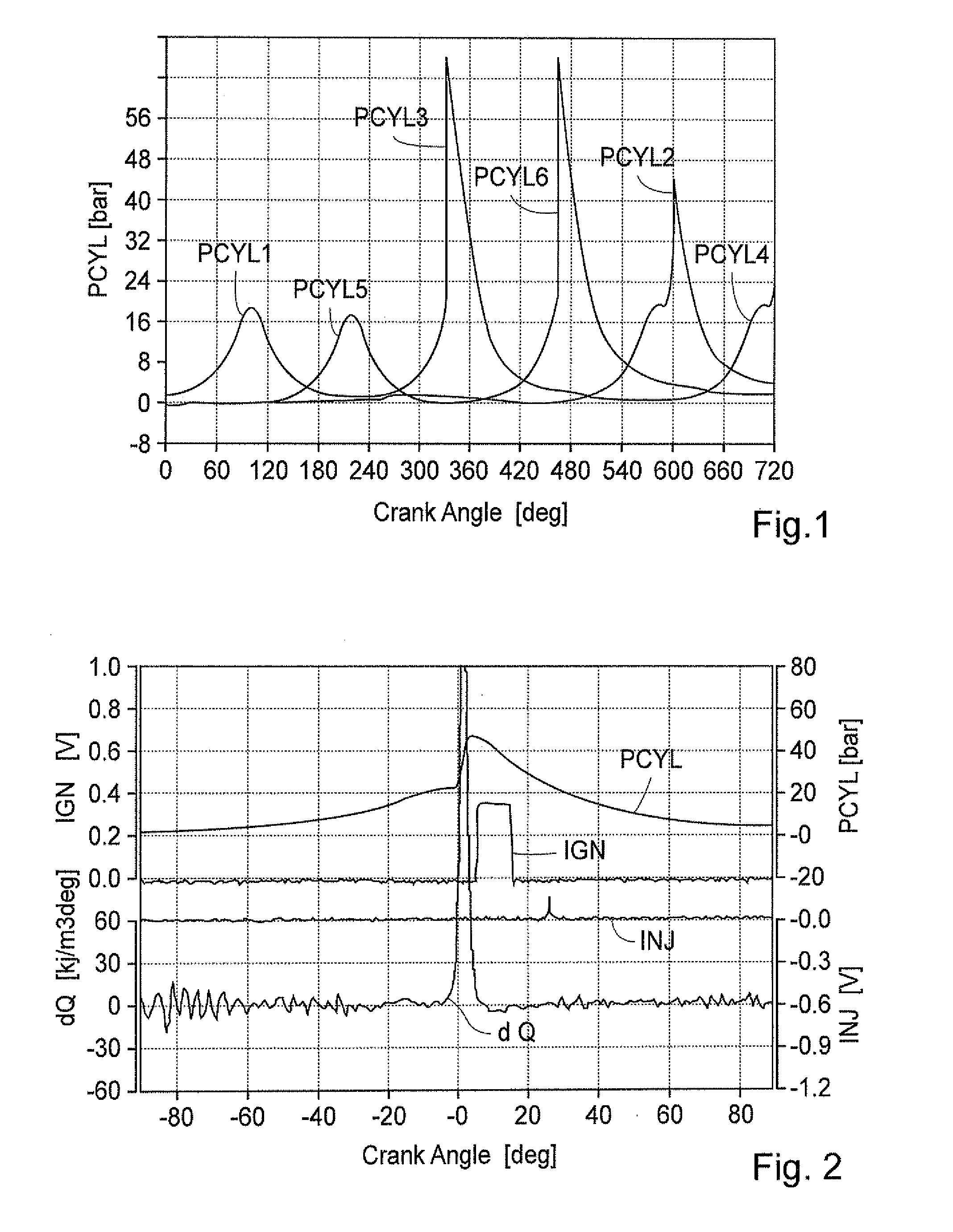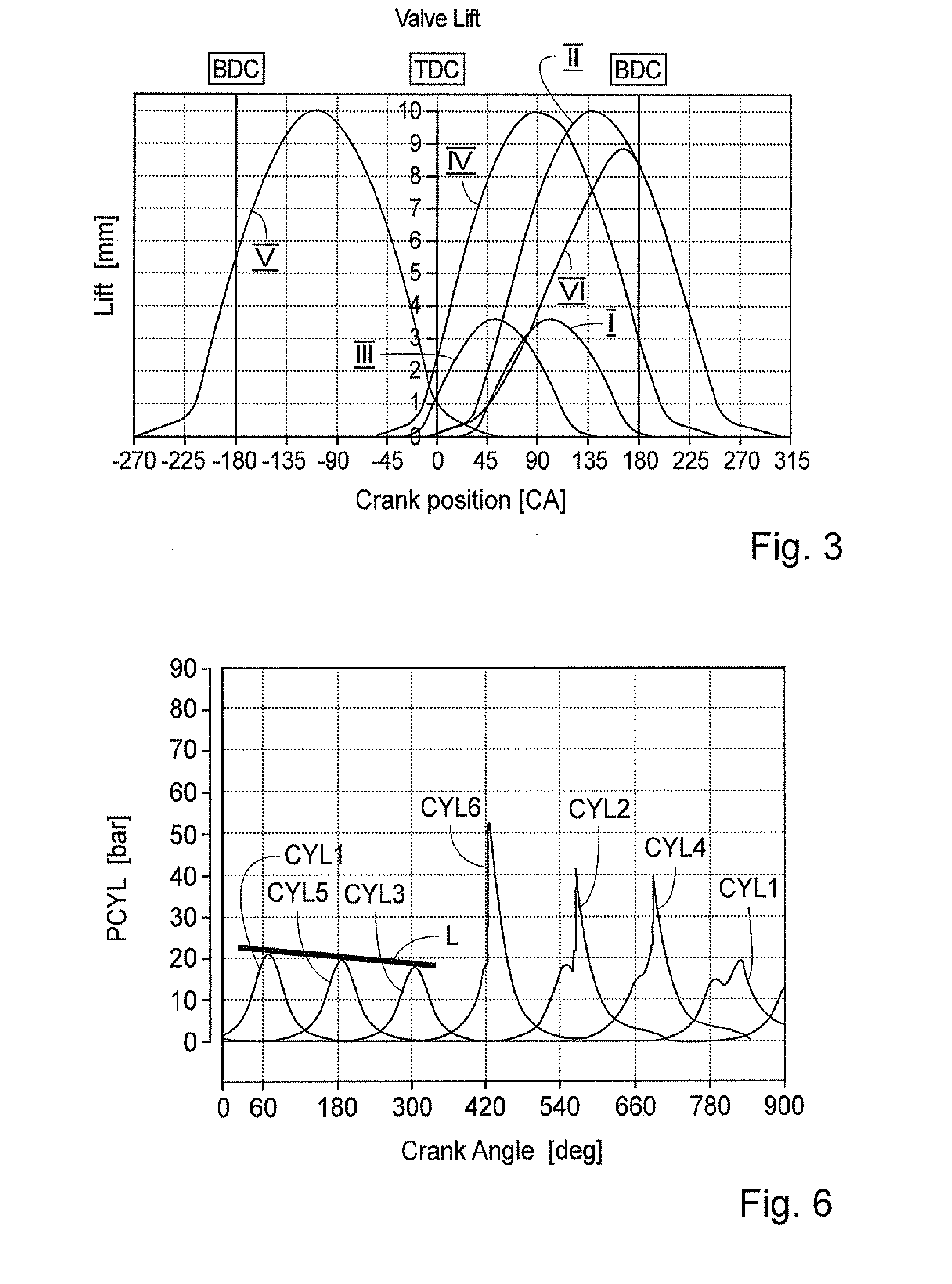Method For an Internal Combustion Engine, and an Internal Combustion Engine
a technology of internal combustion engine and combustion engine, which is applied in the direction of electric control, charge feed system, fuel injection apparatus, etc., can solve the problem that the fuel/air mixture must be totally homogeneous, and achieve the effect of low engine speed and high inlet air temperatur
- Summary
- Abstract
- Description
- Claims
- Application Information
AI Technical Summary
Benefits of technology
Problems solved by technology
Method used
Image
Examples
Embodiment Construction
)
[0022]FIG. 4 shows schematically parts of an internal combustion engine for a vehicle including a cylinder 1 with a piston2, and a spark providing device in the form of a spark plug 3. Of course, the invention is applicable to spark ignition engines with any number of cylinders. An inlet manifold 4 is provided with a fuel injector 5 and a throttle valve 6 for providing a mixture of fuel and air into the cylinders 1, via respective inlet valves 7, in addition to which respective exhaust valves 8 being provided to control access to an exhaust manifold. The inlet manifold 4 can be provided in a variety of manners, and for this presentation, it should be understood as an arrangement providing a volume upstream the inlet valve(s) 6. It should also be noted that the invention can be used in engines provided with direct fuel injectors instead of a port fuel injector 5.
[0023]At a cam shaft 9 for the inlet valves 7, a cam profile switching (CPS) system 10 and variable valve timing (VVT) sys...
PUM
 Login to View More
Login to View More Abstract
Description
Claims
Application Information
 Login to View More
Login to View More - R&D
- Intellectual Property
- Life Sciences
- Materials
- Tech Scout
- Unparalleled Data Quality
- Higher Quality Content
- 60% Fewer Hallucinations
Browse by: Latest US Patents, China's latest patents, Technical Efficacy Thesaurus, Application Domain, Technology Topic, Popular Technical Reports.
© 2025 PatSnap. All rights reserved.Legal|Privacy policy|Modern Slavery Act Transparency Statement|Sitemap|About US| Contact US: help@patsnap.com



